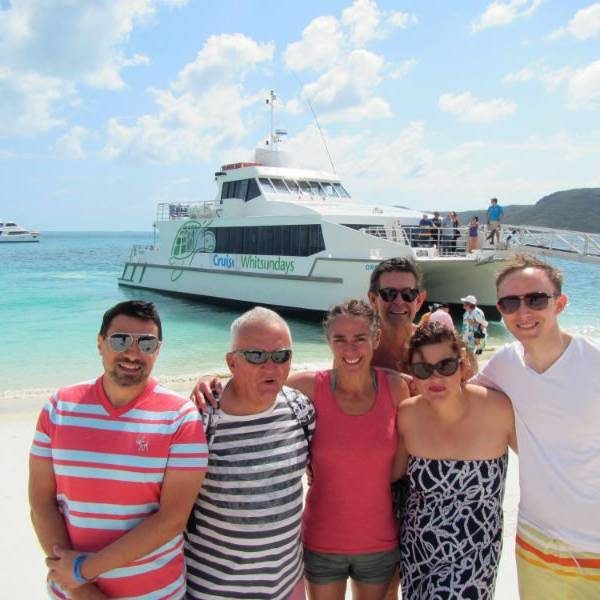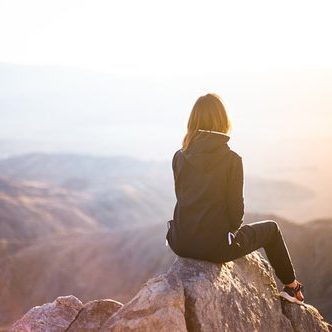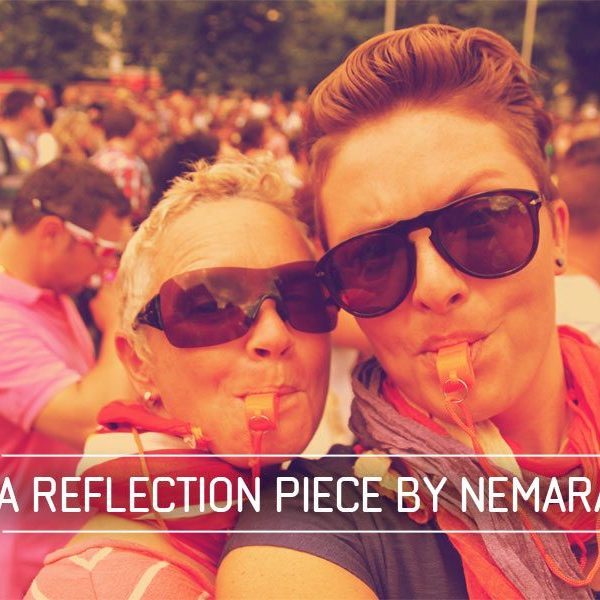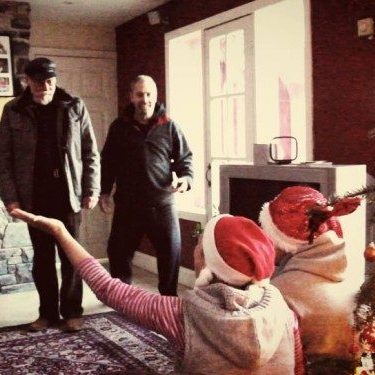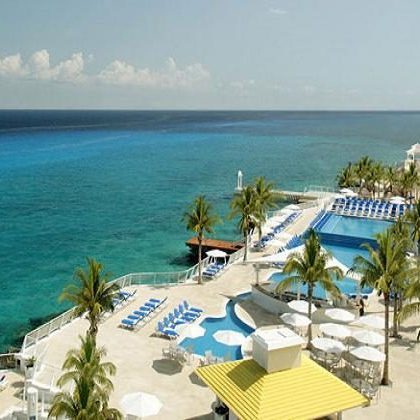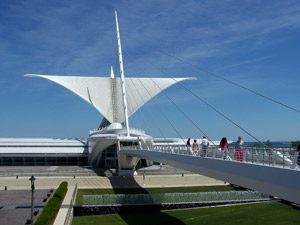 No longer a city just for beer lovers, Milwaukee moves forward with many hidden surprises.
No longer a city just for beer lovers, Milwaukee moves forward with many hidden surprises.
This is not about dispelling the stereotype of Milwaukee as a frostbitten, Laverne & Shirley beer town/cheese land. It is about exploring real Milwaukee, a Midwestern charmer that’s so regularly overshadowed it creates its sunshine. The stereotype will probably melt away on its own.
The first time I visited Milwaukee was last June for its three-day Pridefest. That right there was a surprise. Gay Pride celebrated for a long weekend in a heartland city? Though I tried to resist typecasting, my expectations began low, with visions of ill-fitting jean shorts and foamy keg cups spread across a dinky parking lot turned craft show.
Instead, I crossed the 75-acre Maier Festival Grounds threshold to find a mini-utopia. A half-dozen stages of live music, from country and rock to folk and punk. Twenty-plus food stands offer Milwaukee’s best-known restaurants and trademark fare. Thousands of queers from around the world, chatty and giddy, to be in this beautiful park on the shore of Lake Michigan kicking off the summer.
It was a great sampling of the city that was fun and enlightening. Not often do you get a concentrated immersion into local culture—in general, and in this case gay specific—that represents the rest of the city so well. But the atmosphere of Pridefest is bona fide Milwaukeean, in all its splendid, playful, proud glory.
Home to more than a half-million people, Milwaukee was incorporated in 1846. It became a commercial Mecca thanks to its spot on the western edge of Lake Michigan, with the Milwaukee River flowing through its centre.
Those waterways still help make the place appeal to new residents and visitors. The three-mile, inordinately tidy Riverwalk lines the great river as it winds through downtown and beyond. Crafty local entrepreneurs capitalized on the resulting foot traffic by opening plenty of restaurants and bars along the way, with outdoor patios for people and boat-watching. Every weekend, Riverwalk Boat Tours and Rentals offers a tour of the local microbreweries parked at the river’s edge.
The lakefront is a lovely destination, perfect for the active set. More than six miles of biking, blading, and walking trails line the shore, passing the city’s swimming and volleyball beaches, luscious parks, sports fields and public pools. There’s also Juneau Park, where you can rent a paddleboat or hydro-bike on the lagoon. The Lakefront Trail doubles as a cross-country skiing route in the winter.
And there’s a lot more going on at the lakefront, the pinnacle being the landmark Milwaukee Art Museum. The museum has been around since 1957 and offers a solid collection of contemporary art, including one of the country’s largest by Wisconsin native Georgia O’Keefe.
But the museum was put on the map in May 2001. That’s when Spanish architect Santiago Calatrava’s Quadracci Pavilion opened. For $10 million, the pavilion extended southward of the drab, boxy main building, adding more than 147,000 square feet and, more importantly, the Burke Brise Soleil. The Soleil is the wing-like sunscreen that opens daily with the museum (weather permitting) and “flaps” at noon. The wings are more comprehensive than a Boeing 747, and their 2,100 tons of steel float weightlessly like a world wonder.
The pavilion’s exterior is impressive in and of itself. The experience of standing inside the structure, atop the radiant marble floor, absorbing the dappled natural light while suspended over the lake’s edge, is borderline mystical. And remember your camera: The place is a photography funhouse.
The art museum’s extension is a testament to the foresight of Milwaukee’s leaders. The architecture is, of course, exquisite. But when the project began in 1994, Calatrava was not the widely renowned architect he is now, and daring urban architecture was neither as glamorous nor prevalent as it is today. Back then, Calatrava had not yet built anything in the United States, much less such an ambitious, moveable structure as the Brise Soleil. But for this bold structure, local chequebooks were brandished, and the city earned its place on the international stage.
Many other architectural gems flavour the “Cream City,” nicknamed for the beige tint of its native-clay bricks. Stunning historic structures—evidence of Milwaukee’s economic booms and worldly residents, including the Italianate Chamber of Commerce and Flemish Renaissance City Hall—date back more than 100 years.
More recent history has made the city home to a bevy of peculiarities. Among them is the Holler House in south Milwaukee, where downstairs, you’ll find two lanes that earn the title of an oldest certified bowling alley. If the fact that all the beers run around $2.50 a bottle doesn’t say old-fashioned to you, maybe the “pin boy” working behind the lanes will. Also, note the brassieres hanging from the rafters. Nobody said they don’t get wild in Milwaukee.
Head downtown to save yourself at the Safe House. Designed as a faux-secret haven for special agents, the Safe House may be gimmicky, but it’s so bizarrely fun there’s no wonder it’s a Milwaukee mainstay. You’ll find it by the “International Exports Ltd.” plaque on its alley entrance, but it’ll take either the password or a secret test to enter. Once you’re in, you can see a magic show, play blackjack, glimpse a piece of the Berlin Wall (no kidding) or just wander through the maze of rooms, both secret and not. It’ll cost you a quarter to escape through the secret exit, though.
In a city built mainly by German, Polish and Italian immigrants, you don’t have to wander far to try a Usinger’s sausage. But you do have to head up to Brady Street, a thriving little low-key strip, to eat a saucy, meatball Italian Bomber at Glorioso’s deli. Maybe buy some antacids while you’re there.
Brady Street also has excellent shopping, be it boutique or vintage. Stop by Annie’s for classic clothes crammed from wall to wall, or walk over to Yellow Jacket for the exact opposite in merchandising. This place could be the tidiest, most organized second-hand clothing shop in the world.
If shopping and strolling are your bags, don’t miss the Third Ward, aka Milwaukee’s version of SoHo, replete with warehouses turned condos. You can duck into A Woman’s Touch for something sexy to play with, wander into some of the city’s art galleries or peruse the local designers’ wares. Drop by the immaculate Milwaukee Public Market at the Third Ward’s north end for freshly shucked oysters or a sampling of local Wisconsin cheeses. But don’t miss the aged cheddar from the Wisconsin Cheese Mart, over on “Old World” Third Street.
Vegans and others untempted by meat offerings can find their fun in the neighbourhood known as Walker’s Point, which should cap off any girl’s trip to Milwaukee. True, there are other friendly bars and lesbian-themed nights at a handful of clubs around town, as you’ll see in the local indie paper Shepherd Express. But this is the neighbourhood joint where you can play pool and chat up the locals. And it probably won’t surprise anyone to learn that the Miller (which is vegan!) comes cheap.
It’s tough to see much wrong with Milwaukee, except maybe the same complaint that plagues many American cities: the car culture. With most everyone stuck on four wheels, the sidewalks are woefully empty. Yet the city has many bike lanes, reasonable taxi rates and surprisingly regular buses whose routes nicely link the neighbourhoods, as mentioned earlier. Many central sights are within walking distance, primarily via the Riverwalk.
Upon leaving Milwaukee, I realized the problem with any city of substance: I ran out of time there just as I was finding out more good stuff to do.

